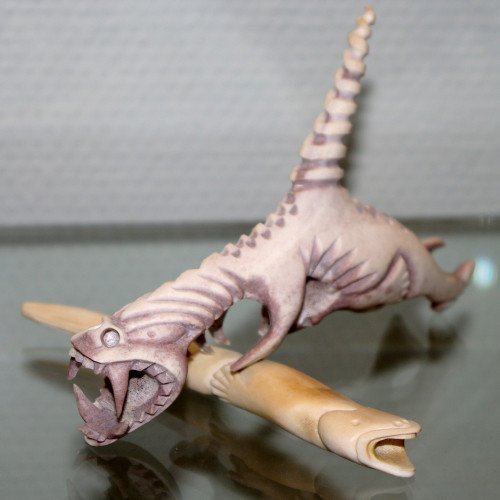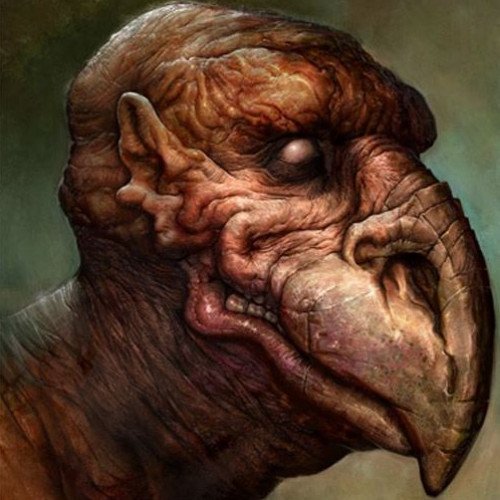Vote on Mythical creatures: Tupilaq vs Alan (legendary creature)

Tupilaq
In Greenlandic Inuit religion, a tupilaq (tupilak, tupilait, or ᑐᐱᓚᒃ) was an avenging monster fabricated by a practitioner of witchcraft or shamanism by using various objects such as animal parts (bone, skin, hair, sinew, etc.) and even parts taken from the corpses of children. The creature was given life by ritualistic chants. It was then placed into the sea to seek and destroy a specific enemy. The use of a tupilaq was risky, however, because if it was sent to destroy someone who had greater magical powers than the one who had formed it, it could be sent back to kill its maker instead, although the maker of the tupilaq could escape by public confession of his deed.Because tupilaqs were made in secret, in isolated places and from perishable materials, none have been preserved. Early European visitors to Greenland, fascinated by the native legend, were eager to see what tupilaqs looked like so the Inuit began to carve representations of them out of sperm whale teeth. Today, tupilaqs of many different shapes and sizes are carved from various materials such as narwhal and walrus tusk, wood and caribou antler. They are an important part of Greenlandic Inuit art and are highly prized as collectibles.
Statistics for this Xoptio

Alan (legendary creature)
The Alan are deformed spirits from the folklore of the Tinguian tribe of the Philippines. They have wings and can fly, and their fingers and toes point backwards.The Alan are said to take drops of menstrual blood, miscarried fetuses, afterbirth, or other reproductive waste and transform them into human children, whom they then raise as their own. They live near springs in extremely fine houses, made of gold and other valuables.